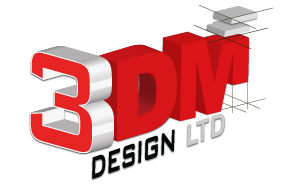Designing a New Mechanical Part in 3D CAD
Key Lessons
Creating a mechanical part from scratch in 3D CAD can be a challenging yet rewarding process. Here are essential strategies to streamline your design workflow, avoid common pitfalls, and ensure future adaptability.
1. Lose the Perfectionism
Striving for perfection often leads to inefficiencies. Embrace iteration as a natural part of the design process. Your first attempt likely won’t be the final version—and that’s okay. Focus on progress over perfection, refining your design step by step. The experience gained through multiple iterations is invaluable.
2. Parametrize Thoughtfully
In modern design, parts rarely go straight from CAD to production without modifications. Build features into your model that are easy to adjust or remove without disrupting the entire design. Avoid over-reliance on complex sketches or primitives that make future modifications cumbersome.
3. Prioritize Modifiability
Ensure your design is structured for easy updates. Colleagues (or even your future self) should be able to tweak dimensions or features without triggering a cascade of errors. A design that requires rebuilding with each iteration wastes time and hinders efficiency.
4. Document Everything
Maintain a detailed record of your design journey—drafts, ideas, challenges, and solutions. This not only helps you learn from the process but also builds a reference library for future projects. A thorough report can save you or your team significant time when tackling similar designs later.
5. Embrace Automation
If your part or its process will be reused, invest in automation. Parameterize your model to accommodate variations or create scripts to streamline repetitive tasks. Automation can transform a time-intensive process into a seamless one, freeing you to focus on innovation.
Final Thought:
Designing a new mechanical part in 3D CAD is a skill that requires patience, adaptability, and foresight. By balancing creativity with efficiency, you can deliver high-quality designs that are robust, modifiable, and ready for production.
What are your go-to strategies for tackling new designs? Let’s discuss in the comments! #MechanicalDesign #3DCAD #Innovation

